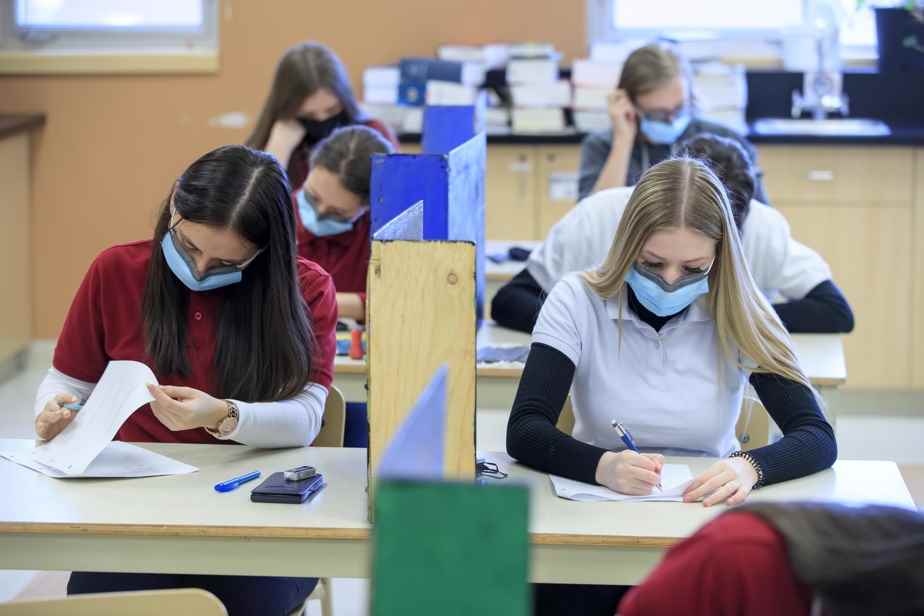Where are people most likely to catch COVID-19? If we go there completely at random, all buildings combined, it is in schools that the risk is highest. But it is in the office that the risk of infection is highest if you are in direct contact with an infected person. And at the office as at school, when a distance of two meters is not possible, the mask remains the best of all strategies.
Posted at 5:00 a.m.
These are some of the conclusions of Concordia researchers – Leon Wang, associate professor of building engineering, and doctoral students Ali Katal and Maher Albettar – whose work has just been published in the specialized journal Sustainable Cities and Society.
In their article, the trio explains in particular how they went about developing CityRPI, an interactive map that aims to calculate the probability of COVID-19 infection by aerosols within various categories of public places in Montreal (schools, restaurants, means of transportation, shopping malls, etc.).
To achieve this, the researchers created a directory of building archetypes from various technical data that were public, such as construction standards. Thus, for schools, the researchers did not know precisely how many students were there – which influences the risk of infection – but calculated how many students can attend a school of a given area (area easily measured from maps available in Google, in particular).

PHOTO PROVIDED BY CONCORDIA UNIVERSITY
Leon Wang, Associate Professor of Building Engineering
In an interview, Leon Wang recognizes it straight away: the card presents a relative risk that has nothing to do with exact science. Its tool has limitations, the first being that, compared to the creation of the map in 2020, the arrival of rapid tests has taken us further than ever from a real number of cases and even from an estimate, as approximate be it.
Moreover, the model did not take into account the year of construction of the schools, nor can it take into account the level of maintenance of the ventilation systems or the type of filter used in the buildings.
Still, Professor Wang believes, the data his team has gathered can help health officials, as well as the public, to formulate the best strategies to reduce the risk of transmission in closed settings, as general as they are. , at a time when health measures are easing and social interactions are resuming. The aim is therefore to determine, by type of building, which health strategies give the best results.
One of the main findings of the researchers is that on days when there is a peak in infections, “the probability of being infected, regardless of the type of building, exceeds the acceptable risk”, can we read .
“This is the reason why, during these periods, confinements were established,” said Leon Wang in an interview.
During those weeks, even with the best ventilation systems, even limiting the number of people allowed into a building or reducing the number of minutes spent there, “it might not be enough”, is he writes.
Of course, we continued to go to the grocery store during the worst hours of the pandemic, “but when you go there, it is better not to linger and to hide very seriously”, underlines Leon Wang.
He points out that he was also one of the first to wear a face covering – “I was being looked at oddly in supermarkets! – seeing cases mount in Asia, then Europe, long before everyone went into their lair in March 2020.
(And yes, despite Wednesday’s announcement, Leon Wang indicates that having not recently had COVID-19, he will continue to wear a face covering whenever distancing is not possible and there is a crowd where it is.)
The mask at the top of the list
Another conclusion of the researchers: the mask and the reduction by half of the number of minutes in an enclosed place “constitute the best strategies [de réduction de la transmission de l’infection] in the majority of buildings”, especially in schools, where there are many students and for a long time in a closed class, which particularly exposes young people and school staff. (Opening windows is considered by researchers to be less effective than masking and reducing class time, as winds can often be insufficient to make a significant difference.)
As for the strategy of doubling the outdoor air ventilation rates – and this, mechanically, from existing systems, when they offer this option –, the researchers have reservations. That’s because maximizing fresh air “also significantly increases building heating demand peaks during the winter,” which is expensive. Therefore, with the exception of meeting rooms, restaurants and modes of transport where it has advantages, this strategy is not the one that should be prioritized.
And the portable air purifier? Also with regard to meeting rooms, restaurants and modes of transport, it represents “the least effective strategy”, write the researchers.

